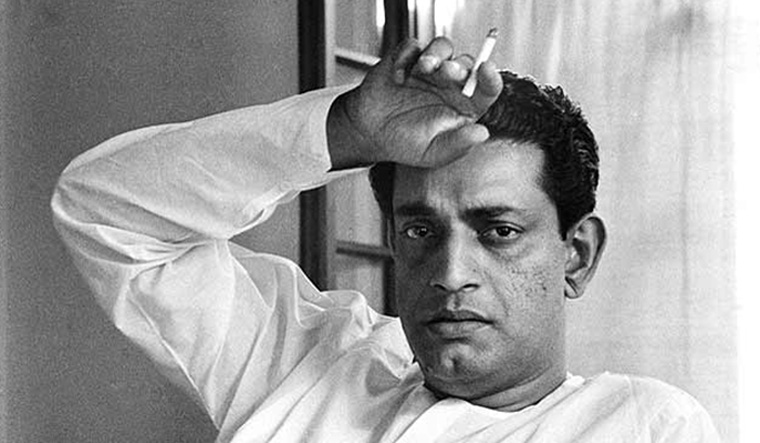Who was Satyajit Ray? Many, in his time, accused him of being anti-Hindu; the man who sold India’s poverty to the outside world, and one who challenged orthodoxy in society. But the people who worked with him or saw him closely, would say that Ray’s ideas were all to reform the Indian society.
Ray, arguably, kickstarted the cinema movement in the country by jointly launching the Calcutta Films Society—with Chidananda Dasgupta (father of actor-filmmaker Aparna Sen)—in order to make Indians aware of the cinemas, and the very purpose of doing it. Within years, Calcutta Films Society made a huge nationwide impact and Indian cinema saw the birth of some brilliant film directors like Shyam Benegal, Adoor Gopalakrishnan and K.G. George.
To celebrate 100 years of Ray, the Film and Television Institute of India, Pune, organised a virtual discussion today, on his life and films, and to explore the relatively unknown or misunderstood side of Ray.
“He was not at all an anti-Hindu but a reformist. But he was construed as an anti-Hindu during his time because he accepted Brahmmo ideology,” said Aparna Sen, during the discussion.
Sharmila Tagore, who played the female protagonist in Ray’s critically-acclaimed Devi – a film which purists rejected then, said that the filmmaker was known as a voice of dissent against anything which he had found as an obstacle to the betterment of the society.
“I still remember that, in the film Devi, which was very much criticised by the orthodox people then, he (Ray) used the devotional songs written by him, and not the ones by many famous song writers of that time. Such was his devotion,” she said.
Sharmila Tagore played the central character in five of Ray’s famous films, including her first film, Apur Sansar, and the popular Nayak, opposite superstar Uttam Kumar.
Veteran artiste Mohan Agashe, who worked with Ray as an actor, said, while depicting the poverty across the world, Ray never portrayed the indignity of the characters.
“In a sense, he was very careful about the dignity of people. He never used that. Later, we often saw some film producers doing business by showing of indignity of poor people. No, Ray was an exception. He never did that,” said Agashe.
In 1967, while shooting for Shakti Samanta’s An Evening in Paris and Nayak, Sharmila Tagore had to frequent between Mumbai and Kolkata. But Ray was such an easygoing person, she said, that she managed to do both films, which were diametrically opposite to each other, with ease.
also read
- Satyajit Ray's short story 'Golpo Bolo Tarini Khuro' to get film adaptation
- Satyajit Ray's centenary celebrations stalled by pandemic: Sandip Ray
- Satyajit Ray's son to bring Feluda, Professor Shanku in same film
- Five unpublished works of Satyajit Ray to be unveiled from 2020
- Reimagining Goopy Gyne Bagha Byne, a Satyajit Ray cult classic
“He used to discard the idea of memorising the script. He was a perfectionist and very particular about dubbing,” Sharmila Tagore said.
She remembered the day when she was picked by Ray for Apur Sansar. She went to Ray with her father when she was just 13.
“I was wearing a frock and he looked at me and said I was very young.”
She picked up valuable acting tips from Ray while doing the film. Like, learning to sob hysterically, shaking her shoulders. The scene demanded her, as Aparna – an unemployed Apu’s young wife – to cry hysterically after seeing her husband’s house. She managed to pull it off.
In another scene, she had to light a match-stick in one attempt, but failed. “It was Soumitra [Chatterjee] who came to my rescue. He asked me to practise it and do it on camera.”
It was Ray who emboldened Aparna Sen to face the camera and showed her how to bring life into acting. The role of a young girl named Mrinalini in the film Samapti—inspired by Rabindranath Tagore’s three short stories—brought Sen to Ray in 1961. She, too, visited him with her father, like Sharmila Tagore. A student of an English medium school in Kolkata, Sen had to wear a sari without a blouse in the film for her character of an indisciplined village girl, who was often ridiculed. Sen’s role in Samapti was the stepping stone of her wonderful journey in cinema.
“Ray used to work with new and ordinary actors, but finally made them extraordinary,” Sen said.
Another aspect of Ray that stood out, according to Sharmila Tagore, was the economy of making films.
“He used limited resources to make a film. But those films finally became assets. Even the scripts he made are priceless. I have still the script of Seemabaddha, though I somehow lost the others,” she said.
The virtual discussion was also attended by film critic Samik Bandyopadhyay and Hariharan Krishnan. While Bandyopadhyay saw Ray closely and interacted with him time and again, Krishnan saw the making of Charulata as a child. The 1964 film is considered to be one of the path-breaking films in world cinema.
“Ray was a man who used to avoid all kind of publicity and preferred not to attend functions and seminars. That is because he used to work 18 hours a day. He used to tell us to just enjoy making the films and don’t think of awards. Look where the films took him. We all owe to him whatever we have learnt,” said Krishnan.
Bandyopadhyay said even when Ray was known for working with limited resources, he was cared about the producers who funded his film.
“He was always careful about the producers’ money. He used to tell me.”



